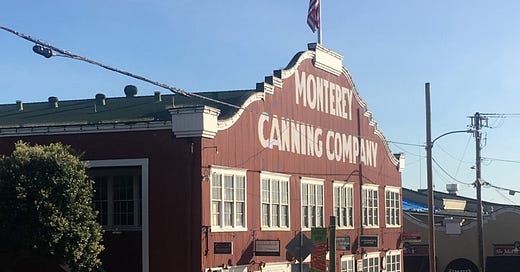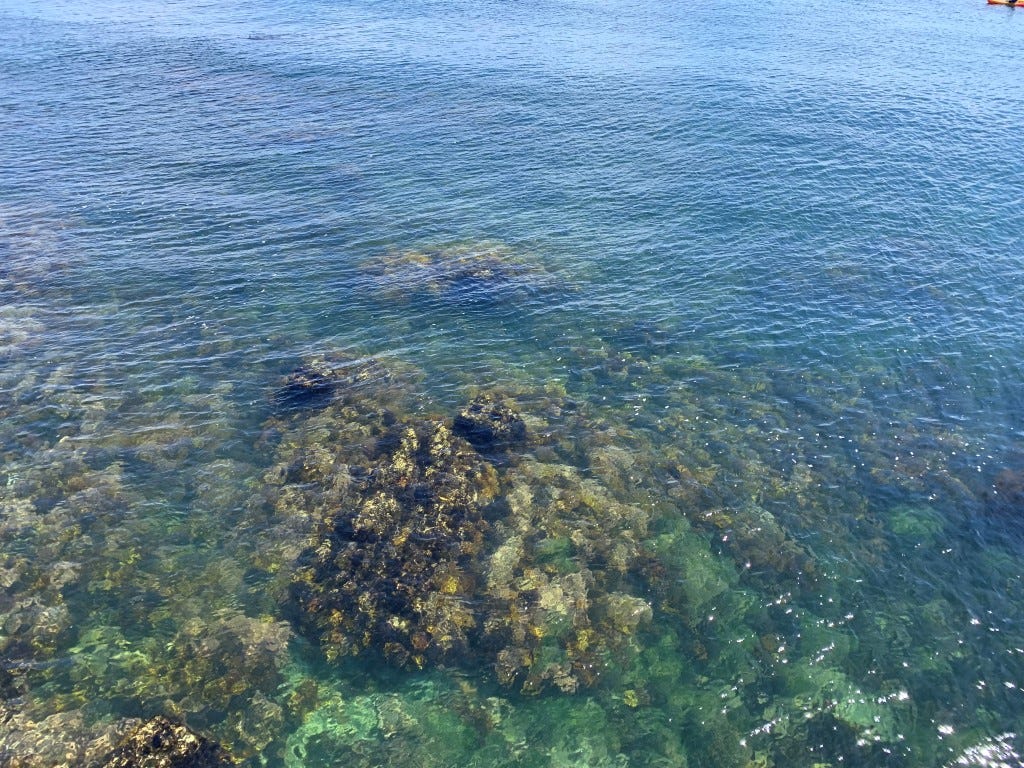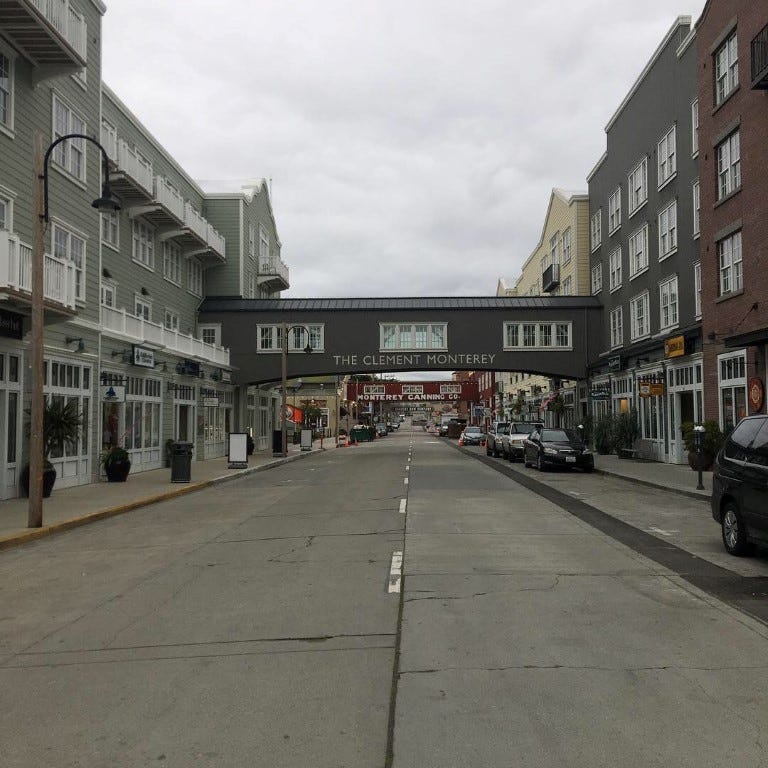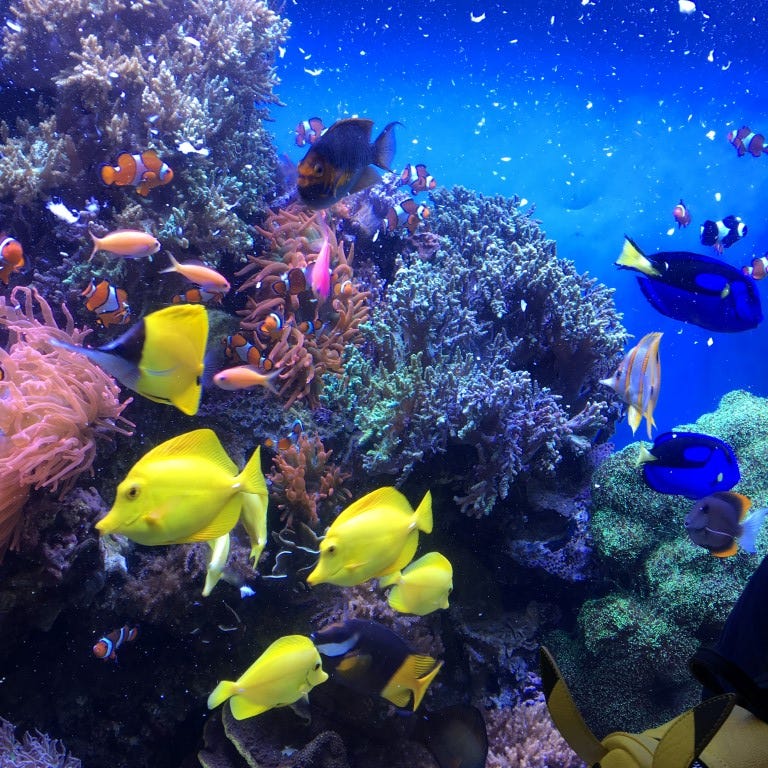I’ve spent a lot of time on Cannery Row in Monterey, California. In my teens and early twenties, I lived less than twenty miles away, in Salinas, where author John Steinbeck was born. I haven’t lived in Monterey County for a long time, but before 2020, I visited Cannery Row at least once a year. Arriving in Monterey always feels like coming home. I haven’t been home in four years.
I usually stay at the Victorian Inn—it’s close to Cannery Row, is reasonably priced, and the rooms are nice. Plus, they offer a full breakfast buffet (with one of those waffle-making machines) and lots of coffee. I’m an early riser, so I wake up while most of the town is still sleeping. I carry a paper cup of hot coffee from the inn and walk one block over to Cannery Row, which sits on Monterey Bay. I like to breathe in the sights and sounds of the place while it’s still soft and cool and quiet. Cannery Row is no longer the bustling industrial center it once was, but it’s still bustling. In those early morning hours, I’m aware I won’t have it to myself for long.
Visiting Cannery Row always spirits me back in time, not only in my own life, but in the lives of my ancestors and the other people who were drawn to this place. I don’t think a person can grow up in the Salinas Valley without feeling a deep sense of its history. My mother’s family emigrated to Monterey County from Oklahoma during the Dust Bowl, like the people Steinbeck wrote about in The Grapes of Wrath and Sanora Babb wrote about in Whose Names Are Unknown. Before that, they traveled the country, earning money by picking fruit. My father’s family was from Arkansas and did the same—my father was born in California, the youngest of four boys, but only because his family happened to be here at the time. He spent his young life following crops with his family until they finally settled in Monterey County in the mid-1900s.
“My first schooling I ever remember was in Moss Landing, California …. [W]e lived in a very little house and our bedroom went out over the water. When the tide came in, it was so very cold and we would watch [the ocean] down through the big cracks in the floor. The little house was back behind Johnny's Fruit Stand. My father and brothers, Grover and Peck, picked apricots, and my mother and sister Pete cut them to dry in a shed. ... After the jobs ended, we put our mattresses, pots and pans on top of two old, open touring cars and headed back to Oklahoma.” —Rubye Ione Owens Calvert Miller (1922-2008) (my maternal grandmother)
Neither can you grow up in the Salinas Valley without having some things in common with John Steinbeck. I was born in King City, where Steinbeck’s novel East of Eden is set. Steinbeck’s father helped settle the town in the late nineteenth century. My mother’s family settled there fifty years later—my grandparents, Arvil Lee “Doc” Calvert and Rubye Calvert, came to Monterey County with my mother, Vicky, when she was around three years old. My father, Keith Phillips, moved there from Arkansas with his family around the same time. The members of our family have come and gone in the years since, but we remain tethered to the place in ways big and small. My younger brother Chris and our baby sister Lisa graduated from King City High School. As an adult, Chris returned to King City to teach high school and coach football. My parents retired there and are now buried next to one another in the King City Cemetery.
My dad was in the Navy, and my siblings and I spent most of our childhoods in San Diego. We visited both sets of grandparents in Soledad, where Steinbeck’s Of Mice and Men is set, and played on the banks of the Salinas River, just beneath the Soledad overpass, in the same spot where George and Lennie have their last talk. We were free range kids—we didn’t know the place was home to quicksand and mountain lions.

I read my first Steinbeck books in junior high, The Pearl and The Red Pony, under the guidance of Leslie Lippman and Rita McGrew, the 7th and 8th grade English teachers who first sparked my love for literature that was a little more classic than Superfudge or What the Witch Left. Later, I spent some time as a drama geek at North Salinas High School. I was a young mom living in Salinas when the film adaptation of my favorite Steinbeck novel, Cannery Row, premiered there, complete with red carpet, paparazzi, and Hollywood movie stars.
“Cannery Row in Monterey in California is a poem, a stink, a grating noise, a quality of light, a tone, a habit, a nostalgia, a dream. Cannery Row is the gathered and scattered, tin and iron and rust and splintered wood, chipped pavement and weedy lots and junk heaps, sardine canneries of corrugated iron, honky tonks, restaurants and whore houses, and little crowded groceries, and laboratories and flophouses. Its inhabitants are, as the man once said, 'whores, pimps, gamblers and sons of bitches,' by which he meant Everybody. Had the man looked through another peephole he might have said, ‘Saints and angels and martyrs and holy men,’ and he would have meant the same thing.” John Steinbeck, Cannery Row (1945)
Cannery Row is my favorite Steinbeck novel not only because of the story, but because I am intrigued by the very real characters behind the story, including Cannery Row itself, which is much more than a setting. Cannery Row made the title of the book for a good reason—it easily takes its place as one of the main characters in the novel. The protagonist, Doc, is based on Steinbeck’s real-life friend, Ed “Doc” Ricketts, a marine biologist. The friendship and marine science work of Steinbeck and Ricketts are well represented today at the Monterey Bay Aquarium.
“And it is a strange thing that most of the feeling we call religious, most of the mystical outcrying which is one of the most prized and used and desired reactions of our species, is really the understanding and the attempt to say that man is related to the whole thing, related inextricably to all reality, known and unknowable ... that all things are one thing and that one thing is all things -- plankton, a shimmering phosphorescence on the sea and the spinning planets and an expanding universe, all bound together by the elastic string of time. It is advisable to look from the tide pool to the stars and then back to the tide pool again.” John Steinbeck, The Log from the Sea of Cortez (1951)
I visited Cannery Row twice in 2019—over spring break with my grandchildren Gavin, Hunter, and Abigail, and alone in late June. I took the train up that last time. I was so overcome by my love for the place during that visit, I wrote a poem called “McAbee Beach.” It’s been too long. I’m returning with my daughter Melissa and granddaughter Louise in a few short weeks. This time, we are staying in a lovely Airbnb in Pacific Grove. The walk between Cannery Row and Pacific Grove is so filled with fresh air—I’ve never breathed more deeply than I have on that walk. I can’t wait to go home.









